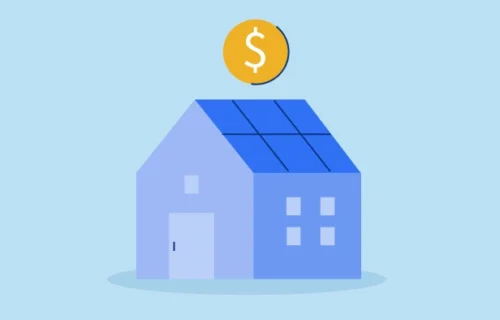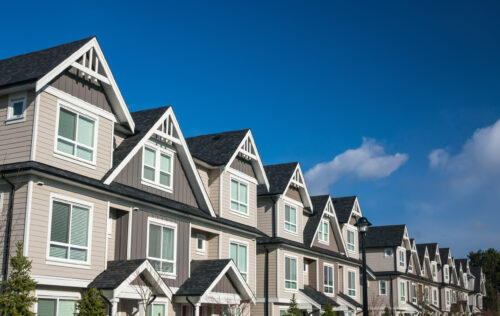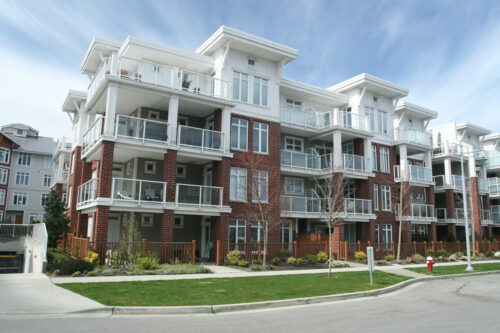
Connect with a Lima One expert today!
If you’d like to know more about this topic or see how it applies to your project, let’s talk.
Why Commercial Borrowers Choose Multifamily Investment
Reasons Commercial Real Estate Investors Should Choose Residential Properties
Do you remember the day you bought your first real estate property? There may have been many reasons you chose that specific property at that specific time. Maybe you were looking for a stable investment in a volatile market, or maybe you needed a secondary source of income. Maybe you purchased a new home and decided to rent out your previous property to create ongoing income rather than selling.
Whatever the reason, that first property introduced you to the domain of real estate investing. Over time, your strategy has evolved, and you may have shifted toward commercial real estate investments. There are plenty of reasons to do so, such as less frequent tenant turnover, opportunities for greater returns, and consistent monthly income.
The commercial real estate market is attractive to investors who want to diversify their portfolios with reliable, profitable investments. Commercial buildings generally fall into one of four categories: office, industrial, retail, and multifamily. Each of these categories carries a unique set of pros and cons, but they also share some advantages. One of the most compelling is that commercial real estate typically has longer lease terms. That means you can lock in a tenant for five or ten years, and you have instant income stability. On the flip side, however, that also means you can’t take advantage of positive changes in the market as quickly.
The outlook for commercial real estate investment is bright, with continued growth expected through 2020. But the truth is that even if you focus most of your investing resources on commercial real estate, investing in residential multifamily properties can still be a smart move.
Here’s why.
Why Sophisticated Investors Should Consider Residential Real Estate
Investing in residential properties is a good idea for seasoned investors for many of the same reasons that prompted many to dabble your toes in real estate in the first place. If we had to boil it down, the best reason to include residential real estate in your portfolio is one every investor is familiar with: diversification.
Diversification is your stability in an evolving market. Diversification gives you wiggle room to take a few risks without compromising your overall income or your investment business.
Let’s say you love the long leases and stable, reliable income that are inherent to commercial real estate. Those are attractive benefits, but they also mean you can’t raise your rates during boom periods. if the economy improves and you’re stuck in a ten-year lease, you can’t reap the benefits. Diversifying your real estate portfolio with residential properties that have shorter leases gives you flexibility to adjust to market fluctuations.
Here are three additional reasons to include residential properties in your long-term strategy:
- Lower costs – Residential properties are generally less expensive than retail or office spaces, which means you won’t need as much capital to get involved. If you are looking at a potential value-add rehab, you can get a bridge loan from companies like Lima One with a 24-month term that allow you to increase the value of the property.
- Flexibility of financing – You have a lot more flexibility when it comes to financing a residential property than you do for commercial investments. With a bridge loan, you can stabilize the property or do a value-add rehab, and Lima One can provide options like no minimum interest, no exit fee, deferred origination fee, and non-recourse loans. This flexibility allows you to make a purchase and then prepare the property for long-term financing from Freddie Mac with optimal interest rates.
- Consistent performance – During an economic downtown, residential properties tend to remain more stable than commercial properties. People still prioritize rent payments even when they can’t afford yoga classes or upscale coffee shops. In other words, while retailers and small businesses might close their doors during an economic downturn and leave you without tenants, residential properties are more likely to remain occupied. Add in the trends toward people renting longer, and the pool of potential multifamily tenants remains strong in most markets.
Should You Invest In Single-family or Multi-family Properties?
Multi-family properties are one of the core types of commercial real estate, but they are still residential by nature. That means they have many of the same advantages as other types of residential properties. As you consider where to make your investment, consider the pros and cons of each option.
- Multifamily – Multi-family properties grow your cash flow quickly and keep it relatively stable over time. If someone moves out of your 100-unit apartment building, your income only drops by 1% until you find a replacement. Plus, managing multifamily allows you to use economies of scale—spreading the costs of maintenance, property management, and more over many renters. The drawback of multi-family properties is that they are much more expensive than single-family rentals. This means that investors must build up their cash reserves before taking the plunge. As a result, it’s usually veteran investors who embrace multifamily investments.
- Single-family – Single-family properties have a lower entry threshold than multi-family properties, which makes them more attractive for some investors. Plus, the cost of adding value to properties through rehabs can be spread out property by property, instead of being done all at once. However, it takes a lot longer to accumulate a portfolio with 100 doors or more, and each investment property has maintenance needs and tenant requirements of its own.
So which option is right for you? The answer is that it depends. If you are currently investing in commercial real estate only, multi-family residential properties won’t be that much of a divergence from your standard operating procedure. You’ll reap the benefits of consistent income and economy of scale while also enjoying the advantages of investing in residential properties. On the other hand, single-family properties and portfolios may pose a new opportunity for you.
Ultimately, real estate investment is a long game. Building out your portfolio with desirable, high-performing properties will take time and careful research into commercial property prices, but it’s well worth it in the long run as you capitalize on the benefits to secure your financial future.
Subscribe for More Insights
Get the latest industry news & Lima One updates.








